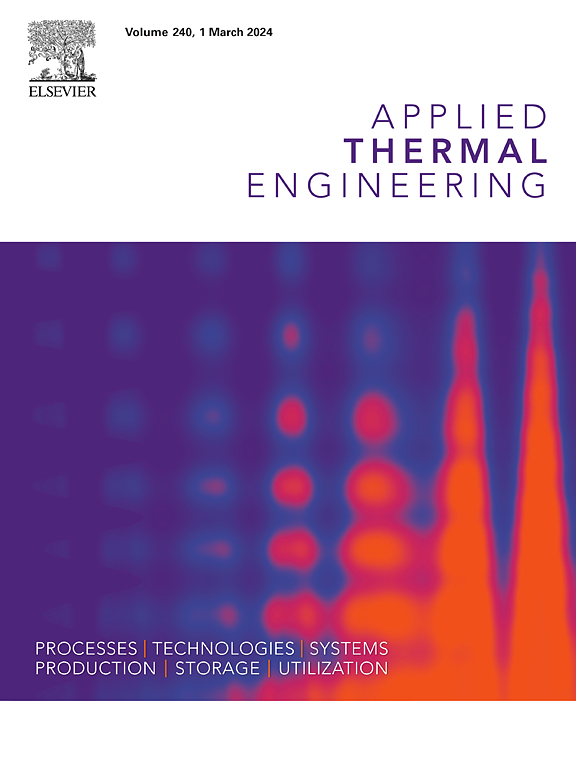综合大型公共建筑不同时间尺度空调冷负荷预测的不同机器学习模型比较与分析
IF 6.9
2区 工程技术
Q2 ENERGY & FUELS
引用次数: 0
摘要
大型综合性公共建筑功能复杂,空调冷负荷波动剧烈,对准确预测提出了重大挑战。不同时间尺度的冷负荷预测可以满足不同的节能控制需求,如实时控制、优化暖通空调运行效率、制定冷库/释放计划等。然而,现有的研究大多集中在单功能建筑和单时间尺度的冷负荷预测上。为了探索大型综合性公共建筑的多时间尺度冷负荷准确预测,本研究采用长短期记忆(LSTM)、门递归单元(GRU)、递归神经网络(RNN)、反向传播算法(BP)、时间卷积网络(TCN)和扩展长短期记忆(XLSTM) 6种不同的神经网络,开发了日、时、十分钟时间尺度的18种机器学习模型并进行了比较。从预测精度和计算效率两方面对模型性能进行了综合分析。结果表明,不同的模型在不同的时间尺度上表现出不同的预测性能,特别是在预测精度和运行时间方面。同时,提出了一种改进的预测优化方法,与非优化方法相比,平均绝对百分比误差(MAPE)降低了36.25%,决定系数(R2)提高了14.62%。此外,本文的研究填补了利用不同时间尺度的各种神经网络进行综合大型公共建筑空调冷负荷预测领域的空白。这对于空调制冷的实时控制,制冷量的高效利用和储存,以及机房节能的实现都具有重要意义。本文章由计算机程序翻译,如有差异,请以英文原文为准。
Comparison and analysis of different machine learning models for predicting air-conditioning cooling loads in comprehensive large public buildings across various time scales
Large-scale comprehensive public buildings feature complex functionalities and drastic fluctuations in air-conditioning cooling loads, posing significant challenges to accurate prediction. Cooling load forecasting at different temporal scales enables the fulfillment of varied energy-saving control requirements, such as real-time control, optimization of HVAC operational efficiency, and formulation of cold storage/release schedules. However, most existing studies focus on single-function buildings and single-time-scale cooling load forecasting. To explore accurate multi-time-scale cooling load prediction for large-scale comprehensive public buildings, this study employs six defferent neural networks, namely Long Short-Term Memory (LSTM), Gate Recurrent Unit (GRU), Recurrent Neural Network (RNN), Backpropagation algorithm (BP), Temporal Convolutional Network (TCN) and Extended Long Short-Term Memory (XLSTM), to develop and compare 18 machine learning models for daily, hourly, and ten-minute time scales. A comprehensive analysis of model performance is conducted based on prediction accuracy and computational efficiency. The results demonstrate that different models exhibit varying prediction performances across distinct time scales, particularly in terms of prediction accuracy and runtime. Meanwhile, an improved prediction optimization method is proposed, which reduces the Mean Absolute Percentage Error (MAPE) by 36.25 % and increases the coefficient of determination (R2) by 14.62 % compared to non-optimized approaches. Furthermore, the research presented in this paper fills a gap in the field of air-conditioning cooling load prediction for comprehensive large public buildings using various neural networks across different time scales. This is of great significance for real-time control of air-conditioning cooling, efficient utilization and storage of cooling capacity, and the realization of energy-efficient machine rooms.
求助全文
通过发布文献求助,成功后即可免费获取论文全文。
去求助
来源期刊

Applied Thermal Engineering
工程技术-工程:机械
CiteScore
11.30
自引率
15.60%
发文量
1474
审稿时长
57 days
期刊介绍:
Applied Thermal Engineering disseminates novel research related to the design, development and demonstration of components, devices, equipment, technologies and systems involving thermal processes for the production, storage, utilization and conservation of energy, with a focus on engineering application.
The journal publishes high-quality and high-impact Original Research Articles, Review Articles, Short Communications and Letters to the Editor on cutting-edge innovations in research, and recent advances or issues of interest to the thermal engineering community.
 求助内容:
求助内容: 应助结果提醒方式:
应助结果提醒方式:


